Discover 35 hidden attractions, cool sights, and unusual things to do in Nanjing (China). Don't miss out on these must-see attractions: Presidential Palace, Ming Xiaoling Mausoleum, and Nanjing Museum. Also, be sure to include Sun Yat-sen Mausoleum in your itinerary.
Below, you can find the list of the most amazing places you should visit in Nanjing (Jiangsu).
Table of Contents
Presidential Palace
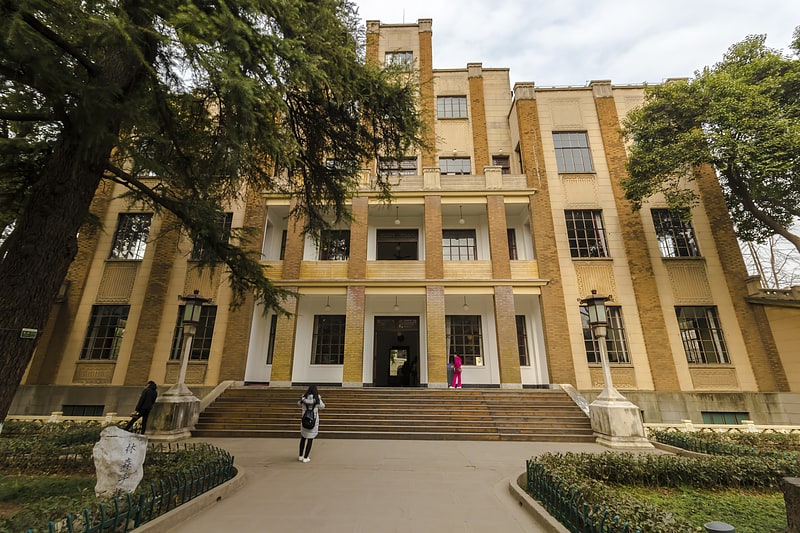
Also known as: 南京总统府
Baroque presidential office building. The Presidential Palace in Nanjing, Jiangsu, China, housed the Office of the President of the Republic of China since 1927 until the capital was relocated to Taipei in 1949. It is now a museum called the China Modern History Museum. It is located at No.292 Changjiang Road, in the Xuanwu District of Nanjing.[1]
Address: 292 Changjiang Rd, 210089 Nanjing Shi
Ming Xiaoling Mausoleum
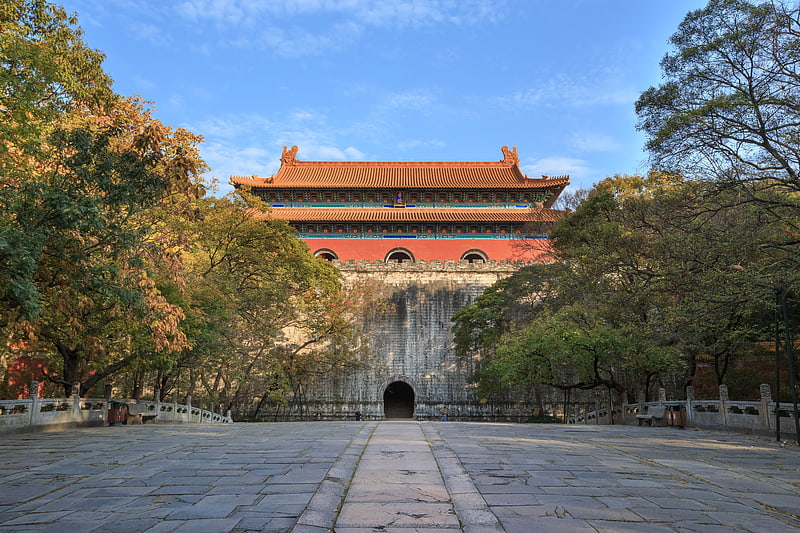
Also known as: 明孝陵
Ming Dynasty tomb with many statues. The Ming Xiaoling is the mausoleum of the Hongwu Emperor, the founder of the Ming dynasty. It lies at the southern foot of Purple Mountain, located east of the historical centre of Nanjing. Legend says that in order to prevent robbery of the tomb, 13 identical processions of funeral troops started from 13 city gates to obscure the real burying site.
The construction of the mausoleum began during the Hongwu Emperor's life in 1381 and ended in 1405, during the reign of his son the Yongle Emperor, with a huge expenditure of resources involving 100,000 labourers. The original wall of the mausoleum was more than 22.5 kilometres long. The mausoleum was built under heavy guard of 5,000 troops.[2]
Nanjing Museum
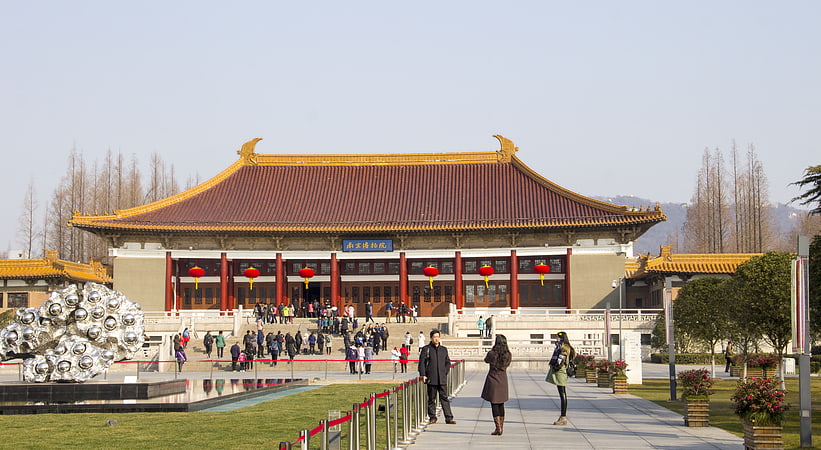
Also known as: 南京博物院
Museum in Nanjing, China. The Nanjing Museum is located in Nanjing, the capital of Jiangsu Province in East China. With an area of 70,000 square metres, it is one of the largest museums in China. The museum has over 400,000 items in its permanent collection, making it one of the largest in China. Especially notable is the museum's enormous collections of Ming and Qing imperial porcelain, which is among the largest in the world.[3]
Address: 321 Zhongshan Rd. (E), 210016 南京市
Sun Yat-sen Mausoleum
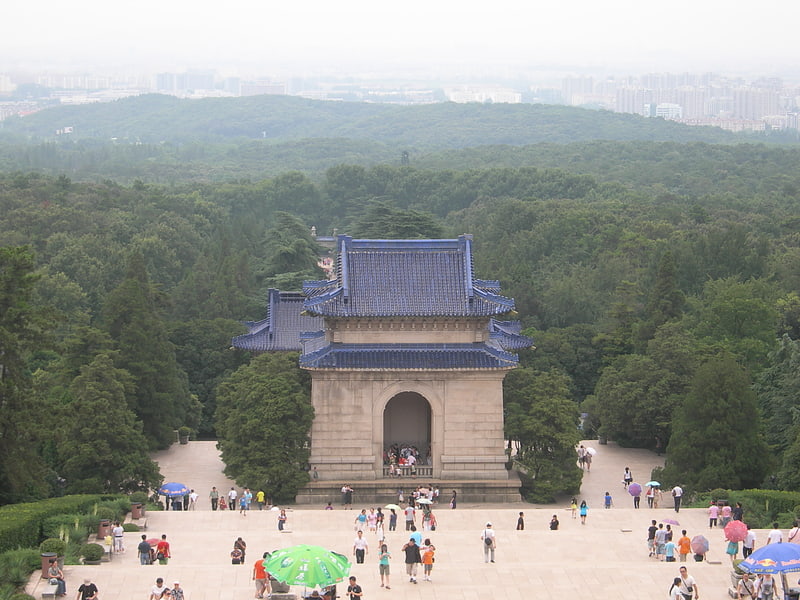
Also known as: 中山陵
Tomb of one of modern China's founders. Dr. Sun Yat-sen's Mausoleum is situated at the foot of the second peak of Purple Mountain in Nanjing, China. Construction of the tomb started in January 1926, and was finished in spring of 1929. The architect was Lü Yanzhi, who died shortly after it was finished. His representative and project partner was his close friend Huang Tanpu.[4]
Xuanwu Lake
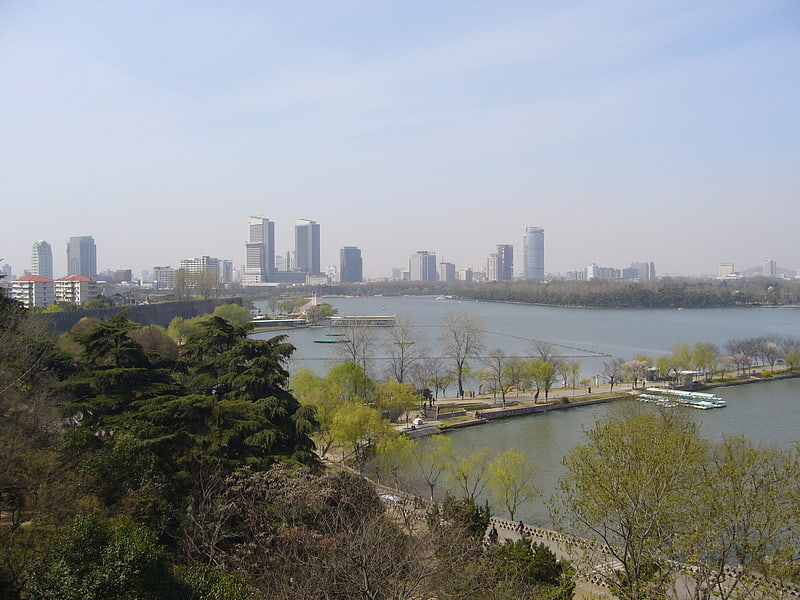
Also known as: 玄武湖
Lake in China. Xuanwu Lake is located in Xuanwu District in the central-northeast part of Nanjing, Jiangsu. It is near the Nanjing Railway Station and Jiming Temple. Five islands within the lake are interconnected by arched bridges. Within the park are temples, pagodas, pavilions, gardens, teahouses, restaurants, entertainment venues, a small zoo, and other attractions. Its main entrance is the Xuanwu Gate.[5]
Tianfei Palace
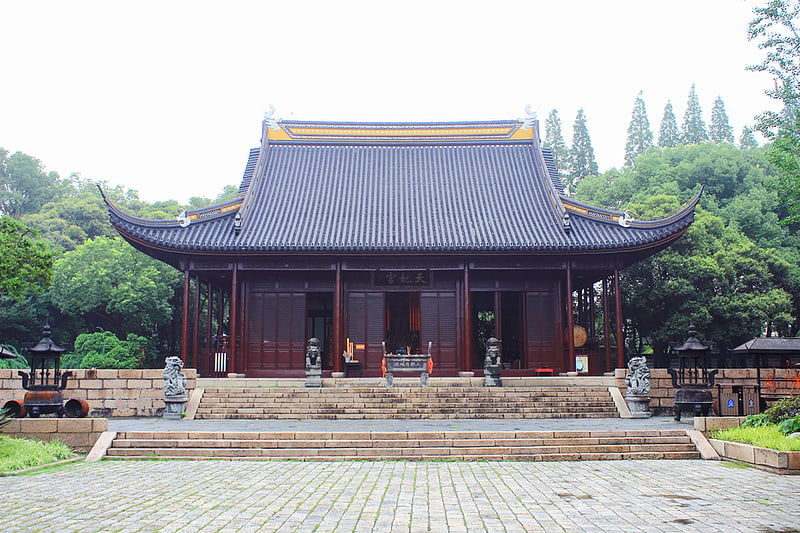
Tourist attraction in Nanjing, China. The Tianfei Palace, officially the Mazu Cultural Palace and also known as the Tianhou Palace, is a restored temple of the Chinese sea-goddess Mazu, the deified form of the medieval Fujianese shamaness Lin Moniang, located in Fangta Park in Songjiang, Shanghai, in eastern China. Officially classified as a museum, the Tianfei Palace conducts Mazuist rites twice a year, on the traditional anniversaries of Lin Moniang's birth and death. It is also used as the site for an annual commemoration of Songjiang's city god Li Daiwen.[6]
Jiming Temple
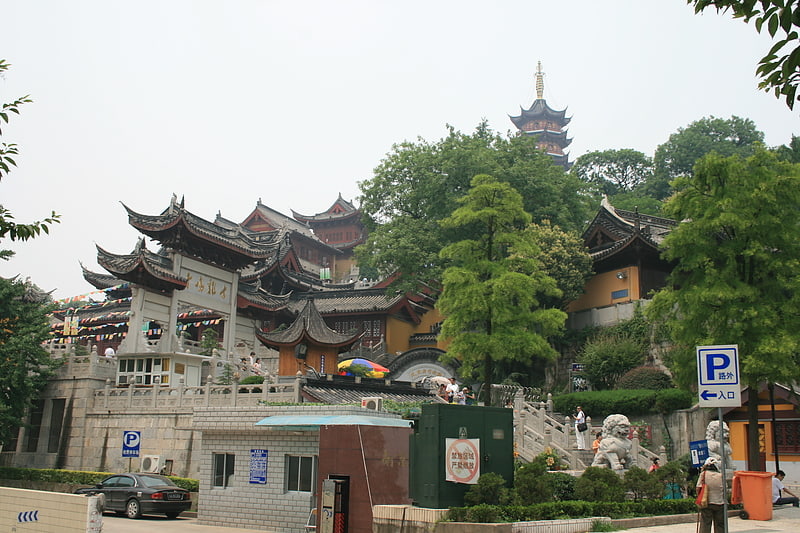
Also known as: 鸡鸣寺
Temple in Nanjing, China. The Jiming Temple is a renowned Buddhist temple in Nanjing, Jiangsu, China. One of the oldest temples in Nanjing, it is located in the Xuanwu District near Xuanwu Lake.[7]
Address: 1 Jimingsi Rd, 210028 南京市
Ming Palace
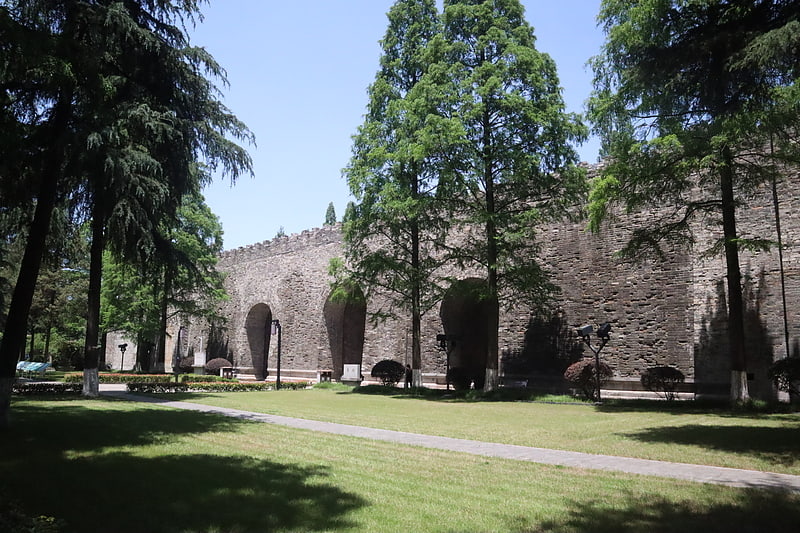
Also known as: 明故宫
Tourist attraction in Nanjing, China. The Ming Palace, also known as the "Forbidden City of Nanjing", was the 14th-century imperial palace of the early Ming dynasty, when Nanjing was the capital of China.[8]
White Horse Park
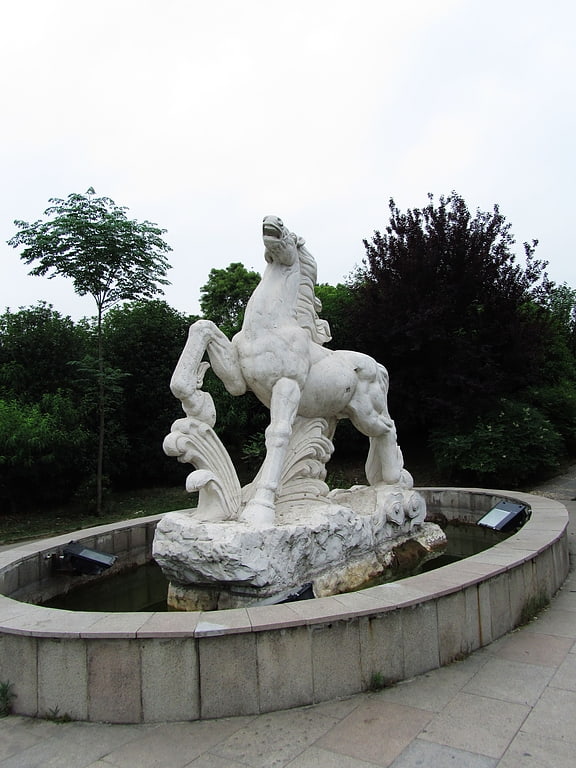
Park in Nanjing, China. White Horse Park, also known as Baima Park, is situated in Xuanwu District, Nanjing, in Jiangsu province. The park is located between Xuanwu Lake and Purple Mountain.[9]
Nanjing Municipal Museum
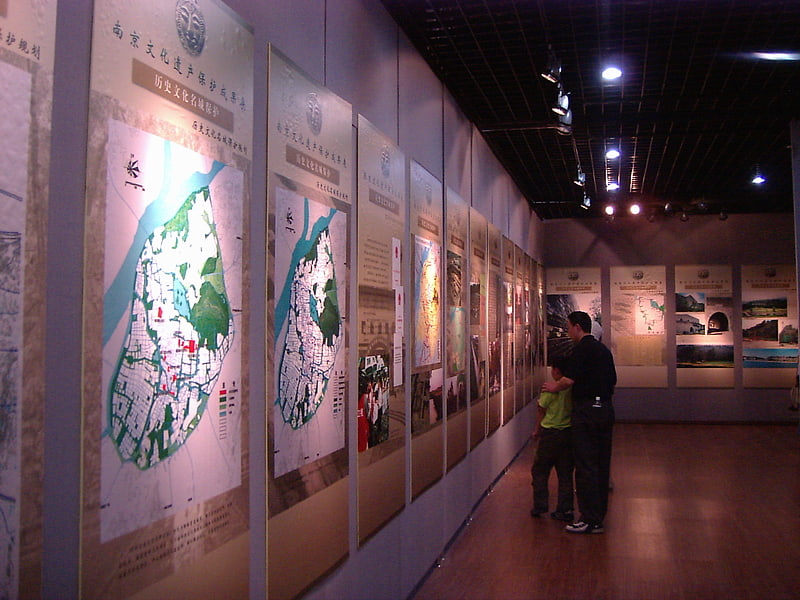
Museum in Nanjing, China. Nanjing Municipal Museum, the city museum of Nanjing, is a comprehensive museum of history and art, located inside Chaotian Palace. The museum was formally established in 1978 and is a key historical and cultural site.
With rich and exquisite cultural relics, the museum holds exhibitions such as “Treasures in Nanjing Municipal Museum”, “the Feature of the Six Dynasties”, “Nanjing: The Capital of Ming Dynasty ”, “Nanjing: A Home for Royalty”, “Seven Overseas Voyages by Zheng He”, “Archaeological Achievements in Ten Years ”, etc.[10]
Mochou Lake
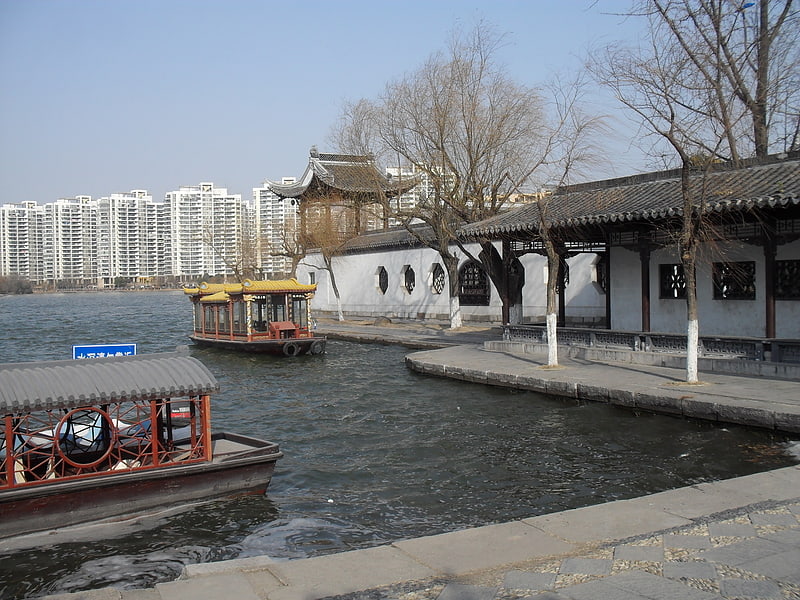
Also known as: 莫愁湖
Lake in China. Mochou Lake is located west of the Qinhuai River and Hanzhongmen Gate in Nanjing, inside Mochou Lake Park. The lake is named after Mochou, a legendary woman known for her beauty, versatility, virtue and loyalty. It was named Hengtang in ancient times, and also known as Stone City Lake. The lake park was owned by Zhu Yuanzhang, the first emperor of Ming dynasty, and bestowed to his general Xu Da. Since then, it has become a famous garden best known for its two-storied Shenggi Pavilion. Within the park are other pavilions, gardens, pools and a stunning rock display. It is noted for its architecture, collection of carved antique rosewood furniture and calligraphies. Visitors can take boats allow through the lotus blossomed lake.[11]
Zhan Garden
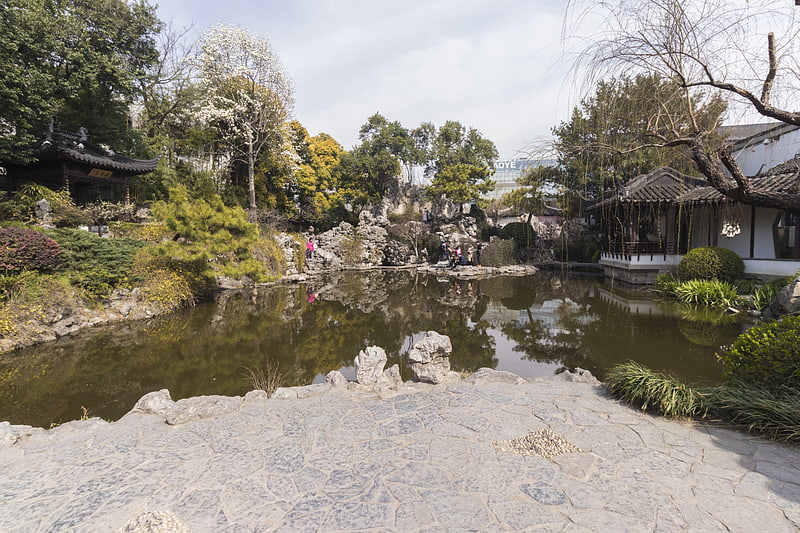
Also known as: 瞻园
Zhan Garden is a Chinese garden located on No. 128 Zhan Yuan Road, beside Fuzimiao, Nanjing, Jiangsu, China.
The first garden on this site was built during the early Ming dynasty by the general Xu Da. It was destroyed during the Taiping Rebellion in the Qing dynasty, but was rebuilt later. As the main residence of Kiangsu Provincial Governor in the late Qing dynasty, it was visited by the Qianlong Emperor and was restored after 1949, with the southern 'mountain' added in 1960.
On the grounds is the Taiping Heavenly Kingdom History Museum.[12]
Nanjing Massacre Memorial Hall

Also known as: 侵华日军南京大屠杀遇难同胞纪念馆
Museum in Nanjing, China. The Memorial Hall of the Victims in Nanjing Massacre by Japanese Invaders is a museum to memorialize those that were killed in the Nanjing Massacre by the Imperial Japanese Army in and around the then-capital of China, Nanjing, after it fell on December 13, 1937. It is located in the southwestern corner of downtown Nanjing known as Jiangdongmen, near a site where thousands of bodies were buried, called a "pit of ten thousand corpses".[13]
Address: No.418 Shuiximen Road, Jianye District, 210017 Nanjing
Sun Yat-sen Mausoleum Music Stage
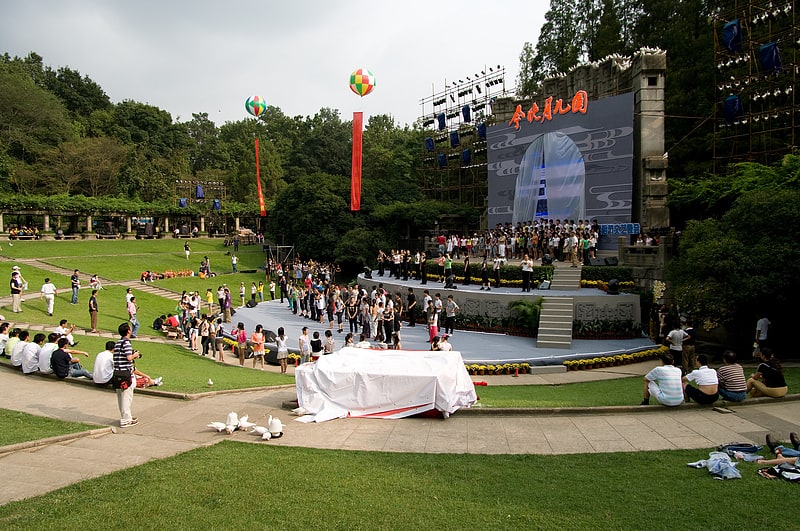
Also known as: 中山陵音乐台
Tourist attraction in Nanjing, China. Sun Yat-sen Mausoleum Music Stage is a building affiliated to the complex of Sun Yat-sen Mausoleum, located in the southeast of Sun Yat-sen Mausoleum Square in Nanjing, Jiangsu Province, China. Covering an area of more than 4,200 square meters, it is an open-air stage mainly used to hold ceremonies, musical performances and assembly speeches to commemorate Dr. Sun Yat-sen. The stage was designed by Yang Tingbao and built by the Liyuan Construction Company for 95,000 RMB donated by the San Francisco Chinese-Americans as well as the Liaoning Province Kuomintang branch. The construction project was started in the fall of 1932 and completed in August, 1933.[14]
Address: Lingyuan Rd, 210014 南京市
City Wall of Nanjing
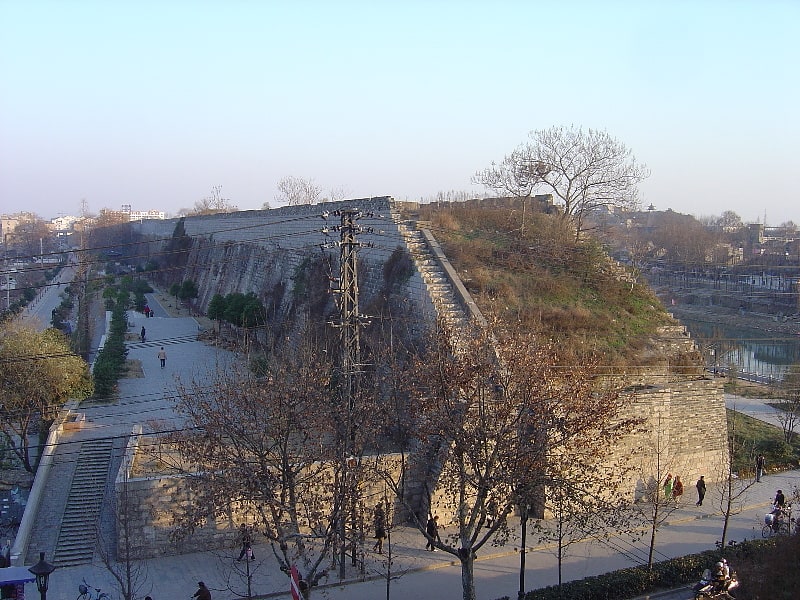
Also known as: 南京城墙
Tourist attraction in Nanjing, China. The City Wall of Nanjing was designed by the Hongwu Emperor after he founded the Ming Dynasty and established Nanjing as the capital in 1368. To consolidate his sovereignty and defend the city against coastal pirates, he adopted the suggestions of advisor Zhu Sheng to build a higher city wall, to expand strategic food reserve and to postpone the coronation. The construction of the wall required the labor of 200,000 workers over twenty-one years to complete. Around 7 million cubic metres of earth were shifted. The City Wall of Nanjing was among the largest city walls ever constructed in China. The enclosed Nanjing City is about 55 square kilometers.[15]
Gate of China
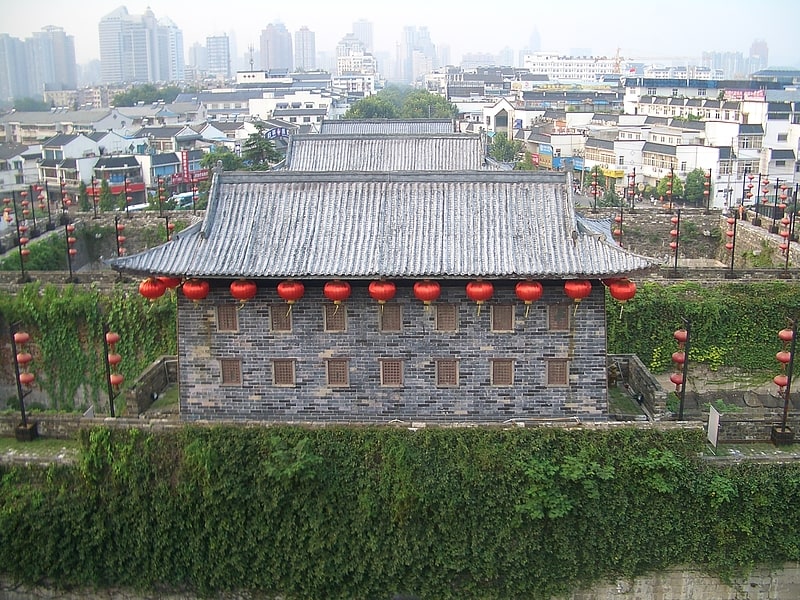
Also known as: 中华门
The Gate of China, is a gate and defensive complex on the city wall of Nanjing, China. It is the southern gate of Nanjing city. It is a renowned ancient city gate in China and the city gate with the most complex structure in the world.[16]
Qixia Temple

Also known as: 栖霞寺
Temple in Nanjing, China. Qixia Temple is a Buddhist temple located on Qixia Mountain in the suburban Qixia District of Nanjing, Jiangsu, 22 kilometres northeast of downtown Nanjing. It is one of Nanjing's most important Buddhist monasteries. The temple is the cradle of East Asian Mādhyamaka.[17]
Nanjing Fuzimiao

Also known as: 南京夫子庙
Nanjing Fuzimiao or Fuzimiao, is a Confucius Temple and former site of imperial examination hall located in southern Nanjing City on banks of the Qinhuai River. It is now a popular tourist attraction with pedestrian shopping streets around the restored temple buildings.[18]
Address: Gongyuan Street, Nanjing
Jinghai Temple

Also known as: 静海寺
Chinese museum on historical temple site. Jinghai Temple is a 15th-century temple located in Nanjing, Jiangsu, China, to the southwest of Shizi Mountain. It was built to commemorate the voyage of Zheng He in the Ming Dynasty. The terms of the Treaty of Nanking were discussed in the temple. It was destroyed and rebuilt thrice, during the Taiping Rebellion and the Second Sino-Japanese War. In 1988, it was rebuilt on its original site. In 1990, the temple became home to the Historical Exhibition Museum of the Treaty of Nanking. After two expansions in 1996 and 2005, it is now the Nanjing Jinghai Temple Memorial, with material related to both Zheng He's voyage and the Treaty of Nanking. It is a National 4A Level Scenic Spot, as well as part of the National Patriotism Education Base, and the Nanjing Relic Protection Unit.[19]
Address: No.116 Chaoyuelou Road, Xiaguan District, 210011 Nanjing
Jiangnan Examination Hall

Also known as: 江南贡院
National park in Nanjing, China. The Jiangnan Examination Hall, near the Confucius temple, is located in the southern part of Nanjing, Jiangsu Province, China. It is the largest examination hall for imperial examination in ancient China.[20]
Stone City

Also known as: 石头城
Park in Nanjing, China. The Stone City is the site of an ancient fortified city within Nanjing, Jiangsu province, China. Almost all of the original city is gone; all that remains are portions of the massive city wall.[21]
Nanjing Yangtze River Bridge
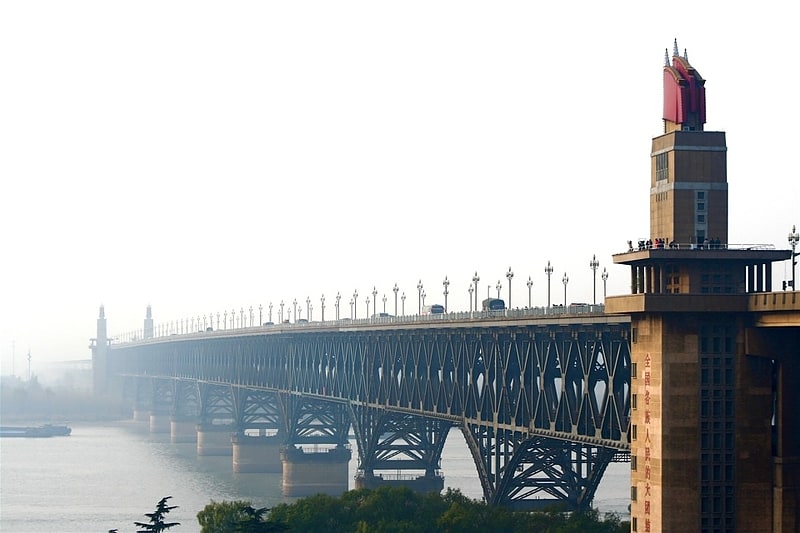
Also known as: 南京长江大桥
Truss bridge in Nanjing, China. The Nanjing Yangtze River Bridge, was First Nanjing Yangtze Bridge, is a double-decked road-rail truss bridge across the Yangtze River in Nanjing, Jiangsu, connecting the city's Pukou and Gulou districts. Its upper deck is part of China National Highway 104, spanning 4,588 metres. Its lower deck, with a double-track railway, is 6,772 metres long, and completes the Beijing–Shanghai railway, which had been divided by the Yangtze for decades. Its right bridge consists of nine piers, with the maximum span of 160 metres and the total length of 1,576 metres. The bridge carries approximately 80,000 vehicles and 190 trains per day.
The bridge was completed and open for traffic in 1968. It was the third bridge over the Yangtze after the Wuhan Yangtze River Bridge and the Chongqing Baishatuo Yangtze River Bridge. It was the first heavy bridge designed and built using Chinese expertise.[22]
Nanjing Underwater World
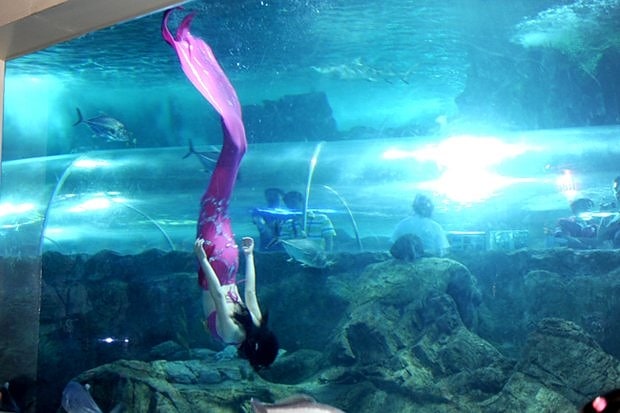
Aquarium in Nanjing, China. Nanjing Underwater World is an aquarium near the Sun Yat-sen Mausoleum in Nanjing. Underwater World is on the south side of Purple Mountain within walking distance of the Ming Xiaoling Mausoleum. The aquarium is a joint venture between Andover Capital Group and the Administration Bureau of Dr. Sun Yat-Sen’s Mausoleum.[23]
Address: Wengzhong Rd., Nanjing
Nanjing Hongshan Forest Zoo
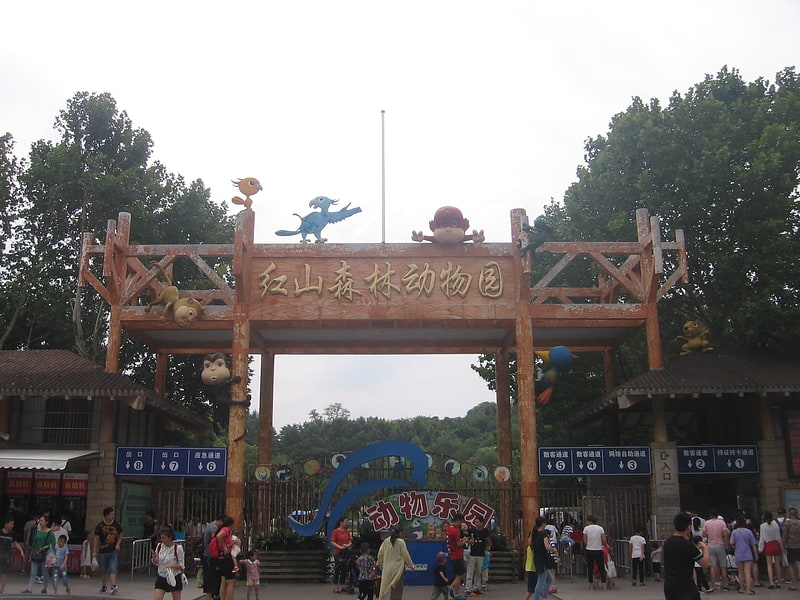
Zoological park in Nanjing, China. Hongshan Forest Zoo is a zoological park in Nanjing, the capital city of Jiangsu province, China. Located on 168 Heyan Road in the northern section of Nanjing city, it is a 171 acres park and forest with 280 kinds of animals.[24]
Address: No.168 Heyan Road, Xuanwu District, 210028 Nanjing
Drum Tower of Nanjing
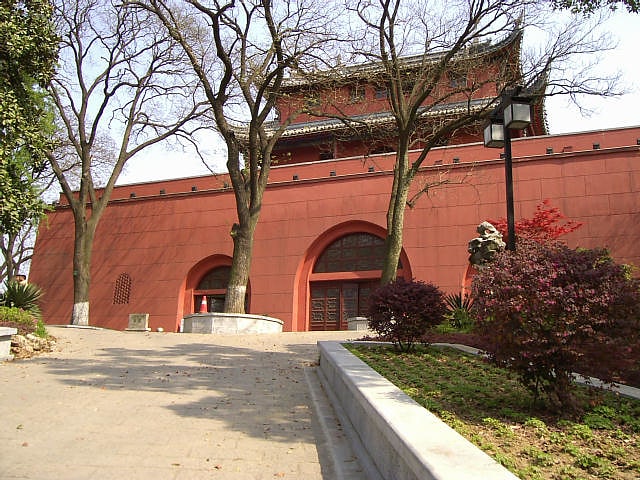
Also known as: 南京鼓楼
Tourist attraction in Tianjin, China. The Drum Tower of Nanjing on Gulou Mountain in the Gulou District of downtown Nanjing, was first built in the 15th year of the reign of Hongwu, of the Ming Dynasty.
The Drum Tower, which is an important part of Drum Tower Park, is 44 meters long, 22 meters wide and 30 meters high. Its shape is like a Chinese traditional city gate, with a square foundation pedestal made of stone. In the pedestal, there are three arch gateways, one larger in the middle and two smaller on the side. In the side gateways, there are four side-rooms, which were guarded by the imperial drumming officers with hundreds of soldiers during the ancient dynasty. On the pedestal is a red two-story watch tower, made of wood and bricks, which was a sacred place to hold some important ceremonies, such as giving a correct time, welcoming honorable guests, offering sacrifices to the god, and others.[25]
Qingliangshan Park

Also known as: 清凉山
Qingliangshan Park (Chinese: , is a 73 hectares park located in the Gulou District, Nanjing, China. It sits on Qingliang Hill, which is more than 100 metres high and 4 kilometres in radius.[26]
Address: 83 Qingliangshan Rd, 210029 南京市
Nanjing Great Hall of the People

Also known as: 南京人民大会堂
Art gallery in Nanjing, China. The Nanjing Great Hall of the People, which serves as the Jiangsu Provincial People's Congress and the National Theatre of Drama and Music and Art Gallery, was built in 1936, and is located at No. 264, Changjiang Road, Xuanwu District, Nanjing, Jiangsu Province, China. The gross floor area being 5,100 square meters, the 4 story hall was built up of reinforced concrete, facing south. Its original name was the National Great Hall and the hall was renamed in 1949.[27]
Address: Nanjing, No. 264, Chang Jiang Road
Christ's Church
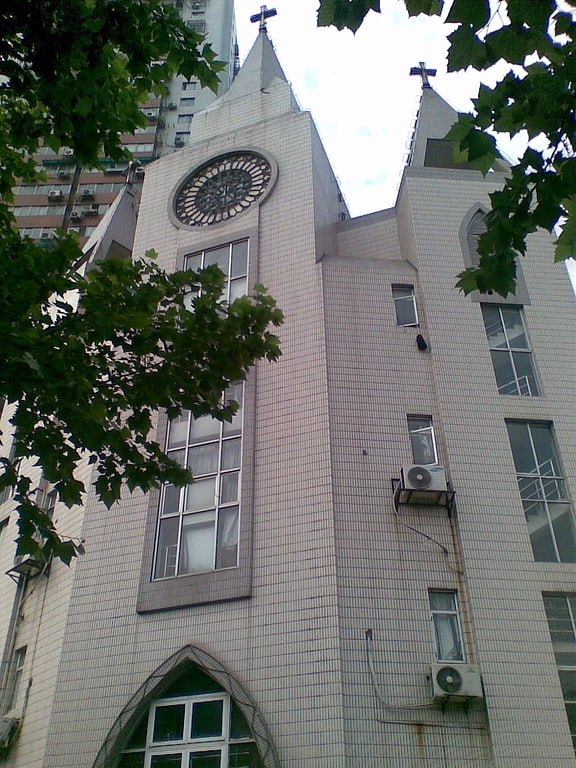
The Christ's Church, Nanjing, locally known as Christ's Church, Jiangsu Road, is a Protestant church located on Jiangsu Road, in Gulou District, Nanjing, Jiangsu, China.[28]
Porcelain Tower of Nanjing
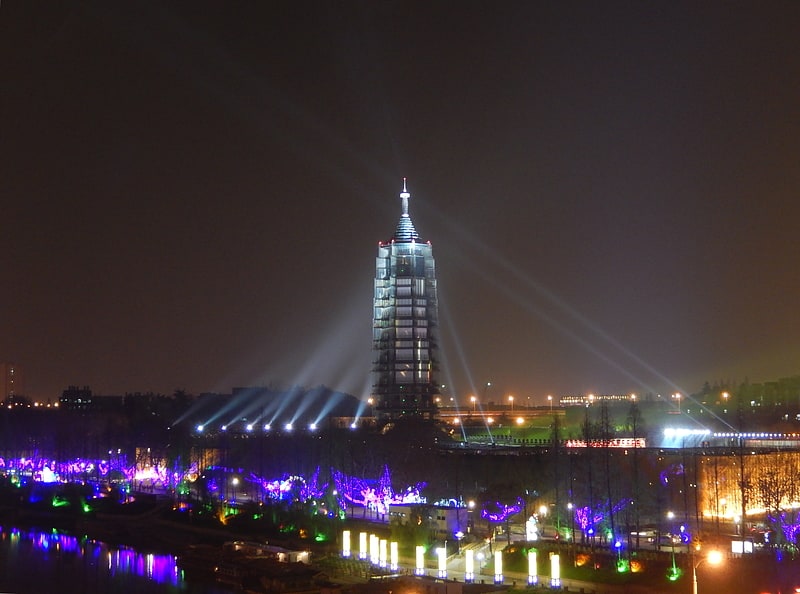
Also known as: 大报恩寺
Place of worship in Nanjing, China. The Porcelain Tower of Nanjing, part of the former Great Bao'en Temple, is a historical site located on the south bank of external Qinhuai River in Nanjing, China. It was a pagoda constructed in the 15th century during the Ming dynasty, but was mostly destroyed in the 19th century during the course of the Taiping Rebellion. A modern life-size replica of it now exists in Nanjing.
In 2010 Wang Jianlin, a Chinese businessman, donated a billion yuan (US$156 million) to the city of Nanjing for its reconstruction. This is reported to be the largest single personal donation ever made in China. In December 2015, the modern replica and surrounding park opened to the public.[29]
Daosheng Christ's Church

Daosheng Christ's Church, more commonly known as Daosheng Church, is a Protestant church located on North Zhongshan Road, in Gulou District, Nanjing, Jiangsu, China.[30]
Jizhaoying Mosque
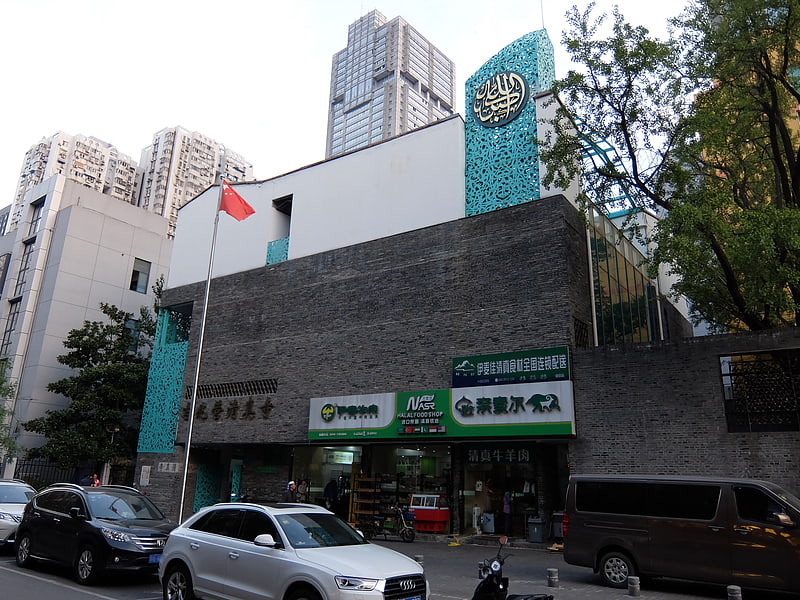
Mosque. The Jizhaoying Mosque is a mosque in Xuanwu District, Nanjing, Jiangsu, China.[31]
Linggu Temple
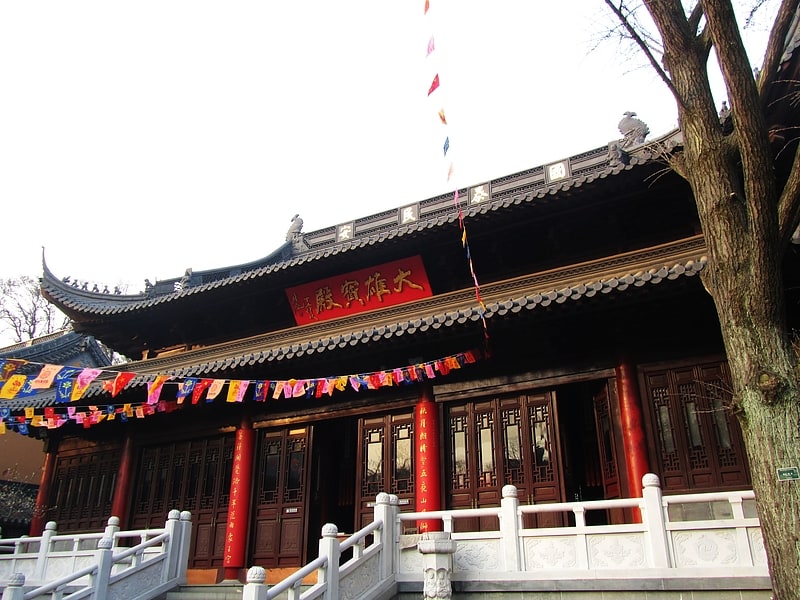
Also known as: 灵谷寺
Temple in Nanjing, China. Linggu Temple is a famous Buddhist temple in Nanjing. It is now surrounded by a large park.[32]
Nanjing Dashengguan Yangtze River Bridge
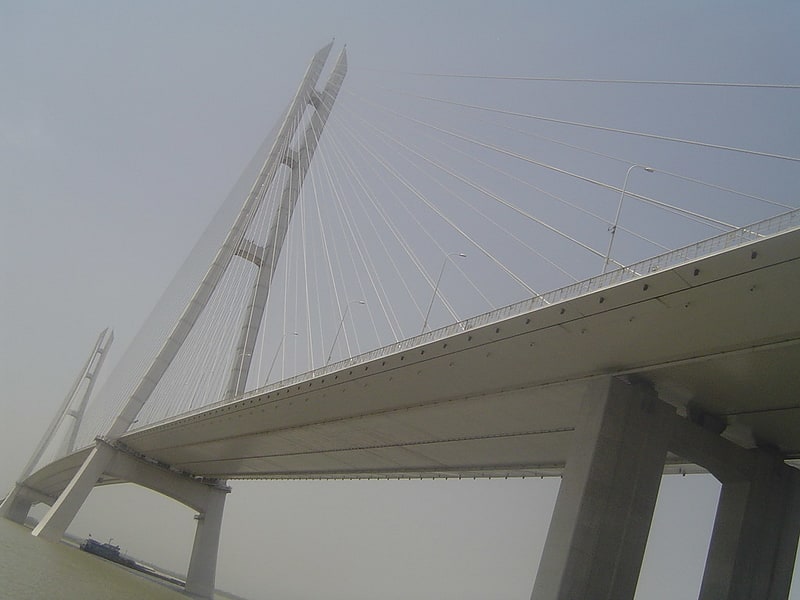
Also known as: 南京长江第三大桥
Cable-stayed bridge in Nanjing, China. The Nanjing Dashengguan Yangtze River Bridge, was Third Nanjing Yangtze Bridge, is the first cable-stayed bridge with steel tower stanchions located in Nanjing, China. It is the third crossing of the Yangtze River at Nanjing. The cable-stayed portion is just a part of the 4.7 kilometers of the complete bridge. Constructed in slightly more than two years at a cost of $490 million, this bridge features dual 215 meters towers. The main span measures 648 meters. When it was completed in 2005 it was the third longest cable stayed span in the world. It still ranks among the top 20. The bridge carries the G42 Shanghai–Chengdu Expressway and the G2503 Nanjing Ring Expressway. The bridge has renamed on 20 December 2019.[33]
Purple Mountain Observatory
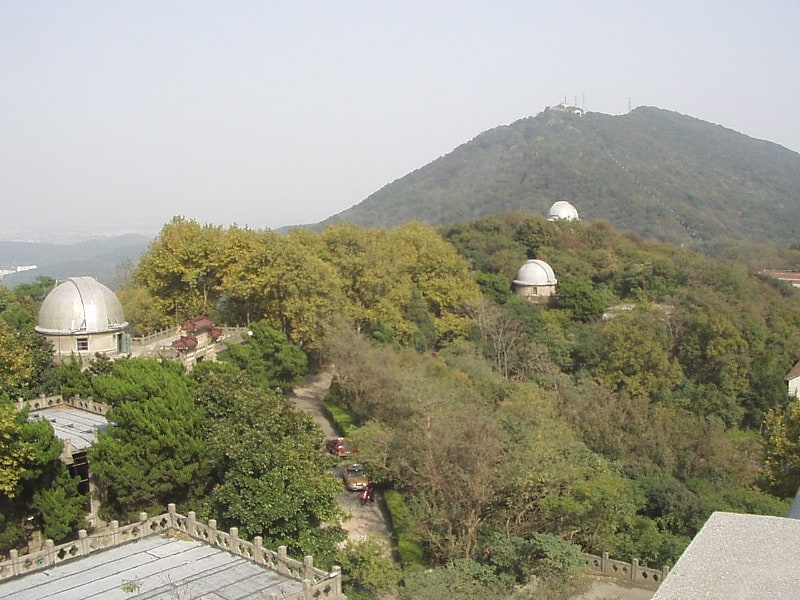
Also known as: 紫金山天文台
Astronomical observatory. The Purple Mountain Observatory, also known as Zijinshan Astronomical Observatory is an astronomical observatory located on the Purple Mountain in the east of Nanjing.[34]
Xu Garden
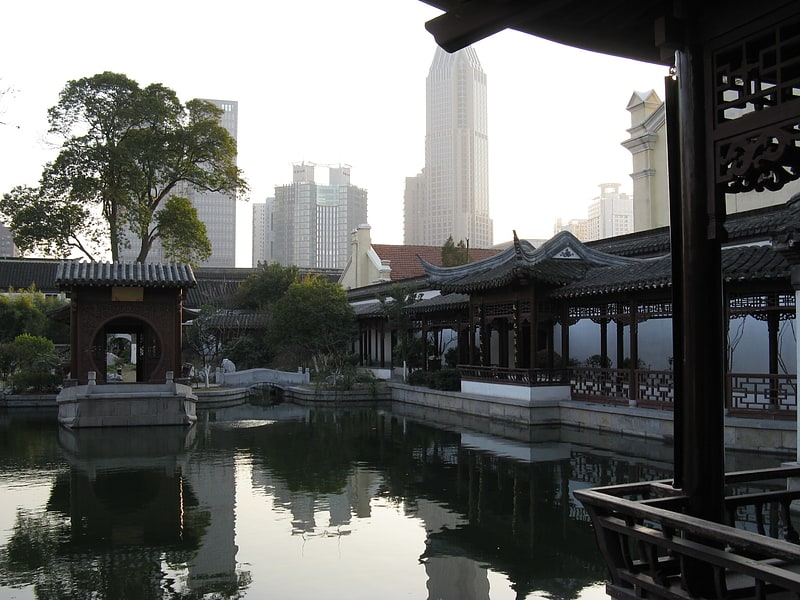
Also known as: 煦园
Tourist attraction in Nanjing, China. Xu Garden, also called Xihuayuan is a classical Chinese garden in Xuanwu District, Nanjing, Jiangsu, China. It is located on the west side of the Presidential Palace in Nanjing. It is also one of two prominent gardens in Nanjing alongside the Zhan Garden.[35]